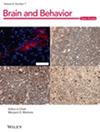Dissociation Between Subjective Sensory Reactivity and Visual Perceptual Sensitivity in Autistic and Non-Autistic Adults: A Brief Report
Abstract
Background
Autistic individuals frequently report atypical sensory experiences, typically assessed using self- or proxy-report questionnaires such as the Sensory Profile. However, it remains unclear whether these subjective reports reflect differences in low-level perceptual sensitivity, with previous studies yielding mixed results.
Objective
We aimed to determine whether self-reported sensory responsiveness, assessed via the Adult Sensory Profile (ASP), is associated with low-level visual perceptual sensitivity (orientation discrimination thresholds) in autistic and non-autistic adults.
Methods
Thirty-two autistic and thirty-two neurotypical adults completed a visual orientation discrimination task and the ASP. Spearman correlations and Bayesian analyses quantified associations between orientation discrimination thresholds and ASP sensory scores across and within diagnostic groups.
Results
Autistic adults reported significantly greater sensory differences than neurotypical adults across all ASP quadrants. However, orientation discrimination thresholds were not significantly associated with ASP scores within either group or across the full sample. Bayesian analyses provided anecdotal to moderate evidence supporting no association between self-reported sensory experiences and orientation discrimination performance.
Conclusion
Our findings suggest that self-reported sensory differences, as captured by the ASP, do not reflect variations in low-level visual perceptual sensitivity. These results reinforce the importance of multilevel assessment frameworks to better understand the complex and varied sensory experiences reported by autistic individuals.


 求助内容:
求助内容: 应助结果提醒方式:
应助结果提醒方式:


